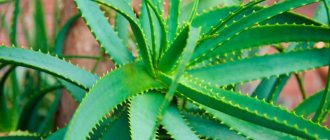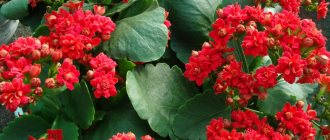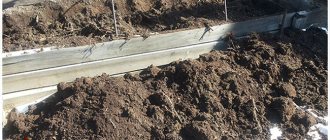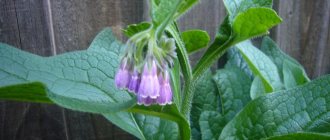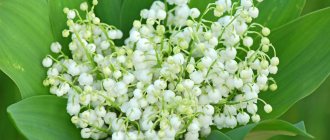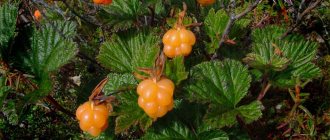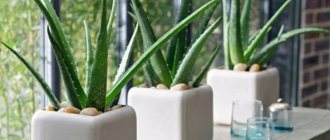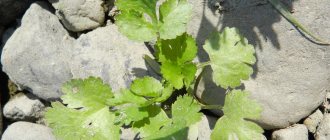What time of year is it better to plant and is it possible in winter?
It is best to plant aloe, like other indoor plants, in late February - early March.
It is during this period that the plant emerges from the state of winter dormancy and biological processes intensify. If it was not possible to plant during this period, then you can postpone the procedure until the end of summer, namely until July-August. At this time, sap flow in the tissues of the plant increases, so it easily tolerates planting and quickly recovers
Important! Planting aloe in late autumn, as well as at the beginning and middle of winter, is not recommended, since at this time the plant is in the dormant stage and will not be able to fully take root, which means it will die.
The magical properties of aloe
Finally, let's talk about the magical properties of this plant. If someone doesn’t know, then perhaps, after reading this information, they will immediately go to an aloe flower shop. For those who have a plant at home, it will be useful to learn interesting information about their plant. You should also observe, perhaps, any magical signs already exist in your home.
- Aloe protects the house and its inhabitants from accidents.
- In the places where the plant originates, its leaves are hung above the front door as protection from troubles and to attract good luck.
- The ancient Egyptians brought leaves as a gift to the gods as a healing agent.
- In Western Europe, hundreds of years ago, agave was considered a plant that brings love and faith to hearts.
- According to bioenergeticists, aloe in a house with sick people is of particular value. Indeed, in this case, the plant is an aura purifier.
- To protect yourself from the evil eye, hang a dried aloe leaf over your front door.
- Talismans were made from aloe roots. To do this, they were dried, placed in a bag and hung around the neck or hidden in an inner pocket.
- The plant was used to attract suitors and love. The dried 13 leaves were burned on the 13th day and the ashes were left in front of the house. But it is important to sincerely ask for forgiveness from the plant while plucking leaves.
The magical properties of aloe
If your aloe blooms, it means that good luck and happiness will soon smile on you and your family. So let each of us have this plant bloom at least once a year.
Required soil composition
The first question that arises before planting a plant is what kind of soil is needed for aloe. The first thing you need to pay attention to is the acidity of the soil. A slightly acidic soil or even a soil with neutral acidity is ideal. It is important to provide air access to the roots of the plant. Without this, the flower will not develop and will soon disappear. Suitable as a leavening agent:
- gravel
- perlite
- crushed brick
- charcoal
Regardless of what type of aloe will grow, the basic composition of the soil will be as follows:
- turf land
- deciduous ground
- coarse sand
- humus
To prepare for planting, soil for aloe is mixed in the following proportions. One part of all other components is added to two parts of turf soil. If we consider a pot of soil in a vertical section, the soil mix will be located as follows.
- The first layer consists of drainage. The thickness of this layer should be 2-2.5 centimeters.
- The layer in the middle of the pot is a mixture of different soils.
- The top layer contains gravel or coarse sand.
Experts advise avoiding purchasing ready-made soils, as they contain a large amount of peat. Such soil will not drain moisture well. It will accumulate in it and lead to rotting of the aloe roots.
The principle of feeding plants with fertilizers at different periods of growth
To support the plant and accelerate its growth, you need to periodically fertilize the soil in accordance with the following recommendations:
- Feeding is carried out only in the warm season, once a month.
- Aloe soil is usually watered with a solution of organic fertilizers that are used for cacti.
- You need to finish feeding in October so that the plant goes into “energy saving mode”.
It is worth adhering to the recommendations regarding proportions, since an excessive amount of microelements can lead to the death of the plant.
Preparing the soil for aloe
Nothing spoils the life of an evergreen succulent more than compacted soil or stagnant water. These two troubles make it very difficult for oxygen to reach the roots. Therefore, the soil must be airy: loose, water- and breathable. As a cultivator, the soil for aloe includes:
- river, coarse sand;
- gravel;
- brick chips;
- shell rock;
- perlite (volcanic rock).
You can determine what kind of land is needed for aloe based on the following indicators:
- water-alkaline balance: neutral, slightly acidic;
- structure: loose, porous;
- composition: clay, turf, sand, humus.
If we look at the pot in cross-section, we will see a “cake”, the lower part of which is filled with drainage, the middle part with an earthen mixture, and the top is framed with gravel or coarse sand.
Regardless of the variety, the presence of turf or clay-turf soil in the soil mixture for growing crops is mandatory. The substrate consists mainly of the following components mixed in equal parts:
- clay-turf soil;
- leaf soil;
- sand.
The required soil composition for aloe is supplemented with neutral or slightly acidic peat and cultivators. Although this is not a universal formula, it is excellent for most types of crops.
The best dishes for planting are plastic or heavy terracotta. Unlike clay, it does not have pores, so the walls of such pots do not evaporate moisture, but retain it. When choosing dishes, be guided by the size of the roots - they should fit freely, at a distance of about 3 cm from the walls. The tightness of the “housing” can be determined by the ratio of the length of the leaves to the diameter of the container, ideally it is 2:1.
The best place for them is window sills on the south or east side; northern coldness has a negative effect on plants.
To maintain healing qualities, indoor pets need fresh air, provided it is warm. That is, opening the window for ventilation on a rainy November day is categorically not recommended. A portion of fresh air improves plant immunity, reducing the risk of infection and weakening. They are brought out of hibernation gradually, replacing watering with spraying. You can also place water next to the pot.
The flower is not picky when it comes to food: a weak solution of low-nitrogen fertilizer is quite enough for it. An excess of nitrogen leads to developmental anomalies such as delayed flowering and massive emergence of shoots.
Composition for growing in a pot at home
The basis for the future soil is leaf soil. It is better to take it from under fruit trees; in extreme cases, maple and linden will do. To prepare the soil, the components are used in the following proportions:
- 2 parts leaf soil.
- 1 part river sand.
- 1 part humus.
A drainage layer is required. For this purpose it is used:
- expanded clay;
- small pebbles;
- brick chips;
- vermiculite
They are placed on the bottom of the pot in a layer of 2-3 cm.
The remaining soil components are laid out in the following sequence:
- Fertile soil.
- Sand (can be mixed with small pebbles).
To enrich the soil with nutrients, wood ash is used at the rate of 50 g of dry matter per 1 liter of mixture.
Important! To prevent diseases and pests, the soil mixture must be disinfected.
This is interesting: Agricultural technology for growing Periwinkle in open ground: how to plant and propagate
Disinfection methods:
- Heat in the oven at 180º for 15 minutes.
- Freezing for the winter (if you do not urgently need to plant the plant).
- Rinsing with a pink solution of potassium permanganate.
Purchased soil
If preparing soil in optimal proportions seems difficult, there is a way out. In order to plant a plant, it is enough to buy a ready-made soil mixture. When choosing, it is important to note that it is in this soil that you can plant succulents or cacti. This soil can be purchased at any store that sells floriculture products.
In the finished mixture, all proportions of the soil are perfectly observed, it is disinfected and immediately ready for use. This is the most important advantage of purchased land. However, there is one very significant drawback. The soil contains peat, which can be lowland or highland.
If low-lying peat predominates in the soil, it quickly becomes compacted and in this state the required amount of air and moisture is practically not carried through. If the peat is high peat, then it is light. This allows moisture to easily penetrate and “breathe” the plant’s roots, but over time the soil also becomes compacted and is difficult to wet.
DIY soil
Properly prepared soil at home will not be inferior in quality to purchased soil. Universal soil is used as the basis for soil for succulents. Next, the components described above are added to it.
To obtain high-quality soil for replanting, the following steps are performed:
- Pour the required amount of soil into a pre-prepared container. Carefully knead all the lumps that have formed in it.
- Wet the perlite with water and add it to the base of the soil.
- We add expanded clay, zeolite, lavas and other components in small quantities.
- Using a small spatula, scoop or hands, thoroughly mix all the ingredients of the mixture.
- After all the components are mixed, you need to check whether the soil concentration is suitable for planting aloe. It's easy to check. A small amount of earth is collected in the palm. She is squeezed tightly. If, after unclenching your hand, the earth does not crumble, then you need to add drainage. If you open your palm, shake your palm and the earth crumbles, then you can use it.
Experts advise not to skimp on soil components, especially when it comes to peat substrate. The higher its price, the higher the quality of the substrate.
Signs of improperly selected soil
It is very easy to determine that the soil is chosen incorrectly. In such soil, aloe develops very slowly or stops growing altogether. Very often, the tips of the leaves of the plant begin to turn yellow and dry out.
Lack of drainage in the soil is dangerous for aloe. Because of this, the water in the pot will stagnate, which will lead to the death of the roots. It is easier for a plant like aloe to tolerate a lack of moisture than its excess. It makes up for the lack of moisture from its own leaves.
Soil compositions for aloe should not be dense, this is simply destructive for the plant. Ventilation in the soil is impaired and this leads to the leaves withering and turning yellow. In order to avoid this, you need to add a baking powder to the soil.
When growing aloe at home, experts advise paying attention to some points.
- Avoid direct sunlight on the leaves of the plant.
- In winter, the plant does not need to be replanted. He needs peace and coolness. Watering aloe is reduced to a minimum and, if possible, the pot with the plant is removed to a cool room.
- After winter, tree aloe needs to be awakened gradually.
- In summer, when the room is hot, you need to ensure constant soil moisture and good ventilation in the room where the plant is located.
DIY soil
If the plant needs replanting, the easiest way is to purchase special soil for cacti and succulents. It can be found at a flower or garden store. Such soil is convenient because it contains all the necessary substances in the correct proportions, has an appropriate level of acidity, and the possibility of pests developing in it is extremely low.
If for some reason it is not possible to find and purchase special soil, it is easy to prepare it yourself. For this you will need:
- deciduous soil;
- coarse sand;
- humus;
- broken brick (or any other type of drainage);
- charcoal.
To harvest deciduous soil, it is best to use soil from under garden trees such as apple and pear trees. If you don’t have your own garden, you can take the top layer of soil from under a maple or linden tree. Humus hazel, acacia or linden is most suitable for succulents. Two parts of deciduous soil are mixed with one part of sand and one part of humus - in a ratio of 2: 1: 1. Lastly, a little broken brick and charcoal are added. Their number will depend on the volume of the flower pot. For example, a 2.5 liter pot will require a small handful of drainage and the same amount of charcoal.
To protect aloe from diseases and pests, soil mixture prepared at home must be disinfected. You can do this in several ways:
- bake in the oven at 180°C for 15 minutes;
- if urgent replanting is not required, you can freeze the soil for the winter;
- treat with a weak solution of potassium permanganate.
Suitable soil for planting outdoors
With the arrival of spring, it is recommended to take the pot of aloe outside or plant it in open ground. If you decide to plant a flower, then it is important to know some nuances when choosing a place:
- a lot of sun;
- you should not choose lowlands where moisture stagnation is possible;
- preferably sandy soils.
In principle, the composition of the soil for aloe is the same as in the pot. It is better to replant directly with the lump of soil in which it grew. If there is not enough sand in the ground, you can add it and then dig up the area for planting a flower. The bottom of the hole should be lined with expanded clay or other drainage. Watering is needed infrequently (how to water aloe correctly?).
Composition when grown in open ground
If the climatic conditions of the region allow, you can plant aloe in open ground. It is necessary to choose a sunny place on a hill so that moisture does not stagnate in the soil.
The composition of the soil should be the same as for growing aloe in a pot. If the soil does not have enough sand, you need to add it and dig up the ground.
To plant, you need to make a hole of the required size in the ground. Expanded clay or other drainage must be placed at the bottom of the hole. Experienced gardeners recommend replanting aloe together with a lump of earth from a pot. This makes it easier for the plant to adapt to new conditions.
The importance of proper soil for indoor succulents
The success of a grower when growing aloe lies in the correct soil. Even careful maintenance will not be able to compensate for the unsuitable composition of the soil. A well-developed root system is the key to the full development of the above-ground part of the plant. Namely, the leaves are especially important for the preparation of medicinal products from aloe.
In its natural environment, the succulent grows in countries where it is hot and there is little rain. The soil in these places is predominantly sandy or clayey, with a high iron content. In our climate, it has been noticed that aloe prefers turf or deciduous soil.
It is also important for a flower that the soil is breathable , loose, and has good drainage.
If the plant does not like the soil, it may react sharply: turn yellow and soon die completely if it is not replanted in time (read about how to properly replant aloe here).
What kind of pot do you need?
Pots for house plants surprise with their variety. There are a wide variety of shapes, textures and colors; it can be unclear what kind of pot is needed for aloe. The container affects the external characteristics of the plant, so this stage is one of the most important.
Variety of pots for indoor plants
Aloe is hardy, but a lot depends on the right pot. For example, a flowerpot is a decorative vessel without a tray. The accessory is elegant in itself, therefore it hides the unattractiveness of the succulent.
It is important to allow enough space for aloe roots. However, you should not initially choose a large pot because in the future you will need an even larger container. You should not consider dark pots, as they get hot in the sun. Rectangular containers are not considered very useful. Water accumulates in the corners, mold appears, and ventilation deteriorates.
This is interesting: Growing Sansevieria cylinders: how to plant, care for, fertilize?
Important! The optimal container size for one flower is 10-14 cm. If the plant is large or there are several aloes in the pot, the diameter of the pot should be 20-25 cm. When choosing a container, you must take into account the root structure of the plant.
When choosing an alternative container, it is necessary to take into account the material of the pot. Most houseplants do well in ceramic containers. Pots of this type are not only beautiful, but also environmentally friendly. Ceramics are characterized by the presence of pores through which oxygen penetrates. Thanks to this uniqueness of the material, a high-quality climate is maintained inside. A ceramic pot is indispensable for plants that do not tolerate waterlogging. Aloe is one of these.
How to choose the right size?
There are several ways to determine the optimal pot size. It should be such that there is 1–2 cm of free space between the straightened roots and the walls and bottom of the vessel.
The required dimensions are also determined by the crown. A correctly selected container has a diameter that is 2 times smaller than the distance between the edges of opposing leaves. The older the plant, the more powerful its root. That's why they take more pot each time.
Another way to avoid making a mistake with your choice is to compare new and old containers. The diameter should increase by 3 cm.
Material selection
Pots are made of plastic and clay. Each material has its pros and cons. Plastic products have the following advantages:
- lungs;
- do not break when dropped;
- they are inexpensive.
The advantage of a clay pot is that the water in it does not stagnate for a long time due to the porous structure of the walls. Thanks to this, the roots do not heat up and do not rot even under the scorching rays of the sun. More weight gives stability, which the plastic counterpart does not have.
This is interesting. The aloe family includes over 300 species. The most popular among gardeners is tree-like. In its chemical composition, the plant is similar to the Madagascar true aloe, used for the production of cosmetics.
Aloe Vera in nature and at home
Before aloe conquered our window sills, settling there under the name "agave", its habitat was hot countries - South America, Africa and the island of Madagascar, the Arabian Peninsula.
True, we might not recognize the plant if we met it in its natural environment - it is very different in appearance from the flowers we are used to with watery-green leaves. Wild specimens reach fifteen meters in height, shoot a long arrow from a rosette of leaves, at the end of which you can see a fiery red or bright yellow flower. Unfortunately, some species, such as Aloe Helena and Aloe Suzanne, are facing extinction.
In countries where aloe is grown professionally, entire hectares are planted with it (approximately 15,000 plants per 1 hectare), and the leaves are collected no more than three times a year. The use of pesticides to fertilize the soil is strictly prohibited.
In nature, aloe reaches 15 m in height
Botany includes more than five hundred plant species. At home we can grow aloe vera, aloe vera and others. They are about equally easy to care for.
Types of aloe
- Aloe Vera (Barbados). The plant has a short stem on which there is a rosette of succulent and hard leaves. It forms an inflorescence like a brush and forms a peduncle up to 90 cm long. It blooms with yellow and sometimes red flowers.
- Aloe arborescens. The tall stem of the plant forms many shoots and has narrow and fairly succulent leaves.
- Aloe folded. A small tree with a short trunk, on which elongated leaves grow in the amount of 10–16 pieces.
- Aloe is awesome. The plant is distinguished by fleshy and thick leaves, with small red-brown thorns. It blooms with scarlet flowers collected in a spike-shaped inflorescence;
- Aloe spinosa. A distinctive feature of the plant is its large, numerous and thick leaves with soft and transparent thorns. A white border runs along the edge of the leaf blade.
Photo gallery: species diversity of aloe
The second name for Aloe Vera is Barbadian
A distinctive feature of aloe vera is its red-brown thorns.
Aloe arborescens can grow up to one meter in length indoors.
Aloe spinata has a white border along the edge of the leaf.
Aloe foldata is a small tree
Reproduction and planting
Aloe can be propagated in three ways:
- apical cuttings;
- leaf;
- children or lateral processes.
It is recommended to propagate aloe in spring or autumn.
Propagation by apical cuttings
A stretched succulent can be renewed by trimming and rooting its top. Trim the top using pruning shears, a sharp knife or scissors.
If there are leaves at the bottom of the cutting, they are removed. Then the top for root formation can be placed in a container with water or dried a little and planted directly in a pot with a damp mixture of peat and sand. In order for a succulent to take root in the soil, it should not be watered too much, and during the rooting process, the sand should be moistened only when it is almost completely dry.
Leaf propagation
You can tear or trim a leaf from the plant, dry it for 3-4 days and place it in a low container filled with damp sand to a depth of 1-2 cm. The soil is moistened by spraying as needed. If the ground is damp all the time, the leaves will begin to rot. The rooted leaf can be transplanted into a small pot of cactus soil.
Reproduction by children
Aloe grows quickly and produces many babies, which can be planted in separate containers. To do this, the plant is completely taken out of the pot, after watering. The children are separated from the main stem along with the roots. You can do this simply with your hands, carefully shaking off the soil from the roots and separating the shoots.
If the trunk or roots of the children were damaged during separation, you need to sprinkle the wound with crushed charcoal or coal tablets and leave to dry.
Possible problems when growing aloe
Table: Diseases
| Symptoms | Diagnosis | Treatment |
| The tips of the leaves dry out | the roots have occupied the entire space of the pot, there are not enough nutrients | Transplant the Aloe Vera into a larger pot. |
| The leaves are curling | insufficient plant care | Leaves should be wiped with a damp sponge to remove dust and dirt. |
| The leaves turn yellow and soften, becoming watery | excess moisture | Water less often and more moderately when the top layer of soil dries out. |
| The leaves are thin and not succulent | lack of light or moisture | Move the plant to a sunny windowsill or water the soil in the pot to the very bottom, add water to the pan. |
| Brown spots | lack of moisture | Make sure that when watering the water reaches the lower roots and flows a little into the pan. |
| Soft dark green spots | fungal infection | Treat with an antifungal drug for indoor plants: trichodermin, gliocladin, Previkur Energy and so on. |
| The leaves have turned red | excess sunlight | You can move Aloe Vera to the shade, the leaves will turn green again. |
| Leaves fall | cold water for irrigation | Water at room temperature and keep a full watering can next to the plant. |
| The stem dries out, Aloe Vera does not respond to watering, does not grow | root rot | Remove from the pot, inspect the roots, cut off the rotten ones, sprinkle the cut areas with charcoal, replant in new soil; if the leaves also begin to rot, then it is better to cut off the surviving crown, dry the cut for 24 hours and move it to rooting, and throw away the diseased plant. |
| Aloe dies unexpectedly without visible signs of disease | dry rot, which attacks the plant from the inside | It is not possible to notice the damage in time; Aloe Vera does not change color and looks healthy, so the best remedy is prevention (spraying with fungicides). |
How to plant aloe correctly
Rooted apical cuttings or aloe babies with roots should be planted in not very large containers, since their root system is still small.
If you plant the cutting directly into a large pot, it may begin to rot. Therefore, it is better to first use a disposable plastic pot, and when the succulent takes root well in it and grows a little, you will need to transplant it into a larger container:
- the bottom of the pot is filled with drainage;
- a layer of soil for cacti is poured onto the drainage;
- the shoot with roots is placed in a pot;
- You need to hold the cutting with one hand, and pour soil around and between its roots with the other;
- when the empty space is filled, the soil is compacted a little and watered not very abundantly;
- if the earth settles, you will need to add more so that the cuttings are deepened and covered to the lower leaves.
Until the aloe takes root in the new pot, keep it in a place protected from the sun. After planting, the plant is watered a few days after the top layer of the substrate has dried.
Properly planting, replanting and propagating aloe is not a difficult task. If you follow all the instructions, the succulent will quickly take root and begin to grow.
How to prepare a plant for transplanting?
Transplantation is stressful for any plant, because the root system inevitably suffers in the process. Proper preparation of a succulent will significantly reduce the risk that it will not take root in a new place. A mature and strong plant does not need such preparation; it is enough to water it generously about two hours before transplanting. Preparation may be required if you decide to propagate aloe by cuttings, and also, if necessary, move the young shoot to a larger pot.
Caring for aloe at home after planting
After planting, the plant requires quality care. If important rules are not followed, aloe may die without reaching the required growth.
The basic rules include:
- suitable lighting. The plant loves bright light, so choose the brightest place for it. It is important to install the container so that the sun's rays do not fall on the leaves, so as not to cause burns to them. In winter, aloe may require artificial lighting;
- temperature. Aloe is a heat-loving plant. In summer, room temperature will be comfortable for him; it is allowed to take the pot out into the fresh air. In winter, aloe begins a dormant period; a suitable temperature for it will be 14 ° C;
- aloe is transplanted when the pot becomes too small for it. A larger container is prepared for a new planting. Drainage is poured onto the bottom and replanted using the transshipment method along with a lump of earth.
A young plant must be handled carefully so as not to disrupt its growth and development.
Leaves in water to obtain roots
How to feed aloe
Mineral preparations that can be purchased in specialized stores are suitable for fertilizing aloe. The procedure is carried out from May to October every 3 weeks. In winter, fertilizing is not needed, because the crop begins a dormant period. When carrying out the procedure, you need to pay attention to some features:
- in the first six months after planting, it is not recommended to fertilize aloe, because such a procedure makes no sense and is not necessary;
- if aloe was planted in special soil for succulents, then there is no need to fertilize for 8-9 months;
- all fertilizers are applied along with water for irrigation; do not use them independently to avoid burns to the roots;
- in the summer, twice a week you can fertilize with a special fertilizer for cacti. This will stimulate the growth and development of culture;
- If a plant is sick, then it can be fed only if the cause of the disease has been established and a method for eliminating it has been selected.
This is interesting: Where and how orchids grow in the wild - the flower’s habitat
Important! You cannot use mineral supplements if you plan to use aloe for medical and cosmetic purposes.
Planting leaves for rooting
How to water correctly so as not to destroy a young plant
During rooting of the flower, monitor the soil moisture. After the crop is planted in a permanent place, you should carefully monitor the condition of the soil in the pot.
For irrigation, do not use tap water right away. You need to leave the container covered for several days to allow it to settle. In winter, aloe should not be watered with cold water; the temperature should be 6-8° above room temperature.
Note! Watering young aloe is carried out only under the roots; it is permissible to periodically pour water into the tray so that the roots are saturated with moisture.
Spraying the flower is not particularly necessary. This procedure cannot be carried out if direct sunlight falls on the leaves. This may cause serious burns.
It is recommended to periodically wipe the leaves with a soft cloth to remove dust accumulation.
You can grow aloe from seeds
The role of soil
A succulent can not only decorate the interior, but also help in the fight against runny nose, acne and skin aging. The rich vitamin and mineral composition of aloe allows it to be used for the preparation of masks, lotions and ointments. However, all these healing properties will only be effective with proper care and nutrition. If the plant develops safely and receives enough useful substances, it is able to evaporate phytoncides, which disinfect the air in the room and activate the protective functions of the human body . Caring for an indoor succulent is a simple matter; by following simple rules you can get a strong and beautiful plant with a rich chemical composition.
Signs of a healthy plant are elastic leaves of a bright green color, the absence of curled and dried tips. If you notice that even with proper care your plant feels bad, it means it needs to be transplanted into another soil.
Possible problems during landing and immediately after it
Often, planting and propagation of aloe occurs without any difficulties. But sometimes gardeners complain that this succulent does not take root. Therefore, you should find out why this happens.
The most common cause of plant death is excessive soil moisture, which is associated with improper watering. To correct the situation, you need to remove the plant from the pot and clean out the rotten areas and roots with a knife. After this, sprinkle the fresh wounds with charcoal and dry for several days in a dark place.
Then plant in a substrate consisting of sand and turf in equal proportions. The plant should not be watered for the next 2 weeks. If during this time the rotting process does not resume, then the soil in the pot can be slightly moistened. As soon as the plant fully strengthens and begins to grow, it needs to be transplanted into a full-fledged substrate.
Mealybug is a dangerous pest of succulents
Another reason why aloe does not take root may be mealybugs. This pest lays eggs in the roots of the plant. As a result, the emerging larvae feed on the sap of the plant, which prevents rooting. In this case, it is recommended to water the plant with a solution of the drug Aktar (1.4 g per 6 l). After a week, spray the plant and soil in the pot with phytoverm.
Note! Treatments should be carried out until the pest is completely destroyed, alternating medications.
What to do if it doesn’t take root
If, despite all the efforts expended, aloe still cannot fully take root, you need to check whether all recommendations are followed. When planting and growing, everything matters, so even the smallest details should not be ignored.
Most often, the plant cannot fully take root, since the temperature regime during the rooting period is not observed. In this case, it is recommended to repeat the planting, replacing the entire soil. You should also wash the pot well and scald it with boiling water.
Growing aloe, like other succulents, is not difficult; the main thing is to provide the plant with conditions that are as close as possible to its requirements. First of all, this concerns planting, since future development depends on this. Otherwise, even an inexperienced gardener can cope with caring for aloe.
Consequences of stagnation of liquid and poor ventilation in a flowerpot
As already mentioned, aloe does not tolerate stagnation of liquid in a pot . If there is no drainage layer or it is of poor quality, then water will linger for a long time. In this case, the root system will rot. For aloe, such a phenomenon is detrimental, since the flower grows in the wild in dry lands, even in deserts. It tolerates drought more easily than excess liquid.
An equally dangerous point for aloe is poor ventilation in the flowerpot. When air cannot penetrate into it freely. This is due to the lack of natural disintegrants in the soil composition. The consequences of compacted soil are yellowing and drying of the leaves.
Soil requirements
Before transplanting this plant, it will be useful to know that the southwest of the Arabian Peninsula is considered its homeland. Despite this, it is widely cultivated throughout the world and has taken root well in North Africa (Morocco, Mauritania, Egypt), as well as in Sudan and neighboring countries, the Canary Islands, Cape Verde and Madeira. This species was introduced to China and southern Europe in the 17th century. It has spread widely in Australia, South America, Mexico, and the southeastern states of the United States.
With all its unpretentiousness and vitality, this succulent presents its “rider” for living in your home, and the main question on this stellar list will be: what kind of soil is needed for aloe?
This is what Aloe Vera looks like
In what soil does it grow in nature?
The wide geography of distribution of this xerophyte in the wild is united by the similarity of the conditions in which it grows. The type of soil needed for aloe to be replanted is determined by the soil characteristics in desert tropical areas, where it grows successfully in warm and dry climates with minimal rainfall. Sandy rocky lands prevail there, which cannot be called fertile, where moisture does not linger for a long time. This should be taken into account when you decide to transplant aloe.
What kind of land is needed?
As a migrant from Africa, South America and Madagascar, the plant is adapted to survive in dry climates, so the soil for aloe should not retain much moisture. The most obvious option, especially for novice gardeners, is to purchase ready-made soil in a specialized store before replanting. Since the plant belongs to the cactus family, it is worth considering a succulent mix. By the way, some packages with the mixture describe in detail how to plant aloe at home.
More experienced plant growers, in order to replant aloe, can prepare soil for aloe on their own, in which it will be comfortable for a long time.
To plant aloe at home you will need:
- sheet soil - 2 parts;
- sand – 1 part;
- humus - 1 part.
